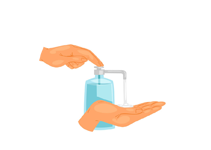Cefdinir
Cefdinir is an oral antibiotic medication that belongs to the class of cephalosporins. It works by inhibiting the growth of bacteria, making it effective in treating a wide range of bacterial infections. Cefdinir is commonly prescribed for conditions such as respiratory infections, skin infections, and urinary tract infections. It is important to follow the prescribed dosage and complete the full course of treatment to prevent resistance to the antibiotic.
Uses of Cefdinir
- Treats respiratory tract infections, including pneumonia, bronchitis, and sinusitis.
- Used for treating skin and soft tissue infections caused by susceptible bacteria.
- Effective in managing urinary tract infections (UTIs) and ear infections (otitis media).
- Prescribed for treating tonsillitis and pharyngitis caused by bacterial infections.
How Cefdinir Works
Cefdinir works by inhibiting the bacterial cell wall synthesis, which disrupts the bacteria's ability to maintain its structure, leading to bacterial cell death. This action helps to eliminate the bacterial infection from the body. Cefdinir is effective against a wide variety of gram-positive and gram-negative bacteria, making it a versatile antibiotic for treating various infections.
Benefits of Cefdinir
- Effective treatment for various bacterial infections including respiratory, urinary, and skin infections.
- Generally well-tolerated with a relatively low risk of severe side effects.
- Convenient oral dosage form, making it easy for patients to administer at home.
- Helps in reducing the severity of symptoms and promoting faster recovery from infections.
How to Take Cefdinir
Cefdinir is typically taken orally in the form of a capsule or liquid suspension. The recommended dosage is usually taken once or twice daily, depending on the type of infection and the severity of the condition. It is important to take Cefdinir as prescribed by your healthcare provider, even if you start feeling better before completing the full course of treatment.
Types of Dosage Available
- Capsules: Typically available in 300 mg and 600 mg strengths.
- Syrup: Available in a 125 mg/5 ml or 250 mg/5 ml concentration for easier administration, especially for children.
Side Effects of Cefdinir
- Common side effects include diarrhea, nausea, headache, and stomach pain.
- Rashes, dizziness, or fatigue may also occur in some patients.
- Severe side effects may include allergic reactions, such as difficulty breathing, swelling of the face or throat, and severe skin reactions.
- Rare but serious side effects may include Clostridium difficile-associated diarrhea, which requires medical attention.
Safety Advice
- Inform your doctor if you have a history of allergies to cephalosporins or penicillin.
- Patients with kidney problems may need a dosage adjustment. Be sure to inform your healthcare provider of any kidney issues.
- It is important to complete the full prescribed course of Cefdinir to prevent the development of antibiotic-resistant bacteria.
- Pregnant or breastfeeding women should consult their doctor before taking Cefdinir to ensure it is safe for use during pregnancy or lactation.
Frequently Asked Questions (FAQs)
Q: What is Cefdinir used for?
A: Cefdinir is used to treat a variety of bacterial infections, including respiratory tract infections, skin infections, and urinary tract infections.
Q: How should I take Cefdinir?
A: Cefdinir is taken orally in the form of a capsule or liquid suspension. Follow your doctor’s instructions for the correct dosage and schedule.
Q: Are there any side effects of Cefdinir?
A: Common side effects include diarrhea, nausea, and stomach pain. Severe allergic reactions may occur but are rare. Consult a doctor if you experience any unusual symptoms.
Q: Can I take Cefdinir if I am pregnant?
A: Consult your doctor before using Cefdinir during pregnancy to ensure it is appropriate and safe for you and your baby.
Download India's most affordable pharmacy app
- Compare with medicine prices
- Save upto 90% on your medicine bills

Temperature Controlled storage and delivery

Regular Sanitization

Disinfected Packaging














 Added!
Added!